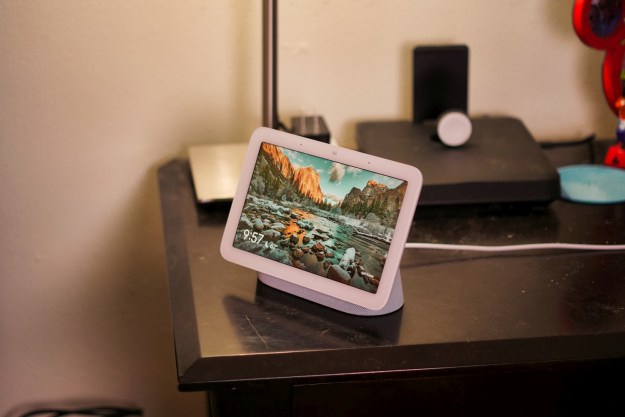Google and Amazon have done a great job marketing the power of smart speakers to the world. Forget a chicken in every pot — today, there’s a smart speaker on every desk. But are we really using these things to their fullest extent? Hardly, Google admits.
“I don’t think we’ve done a good job explaining our value proposition to consumers,” Mark Spates, Google’s product lead for smart speakers, said Tuesday at the IoTC Next conference in New York. “We have to come up with new stories that aren’t just ‘Go buy another Mini.'”
He’s right, of course. The most popular song on Amazon Alexa is “Wheels on the Bus,” because the most common thing people do with their smart speakers is overwhelmingly listen to music — and sometimes entertain their kids, we suppose. We proved that with a quick Twitter poll yesterday:
quick poll: What's the main thing you do with your smart speaker?
— Jeremy Kaplan (@SmashDawg) November 12, 2019
Spates has several ideas about how to improve discoverability on smart speakers, he told Digital Trends later that day. It’s not on users, and it’s not a question of prodding people to read the darn manual.
“That’s totally on us,” Spates said. “We have to get away from marketing devices. If you can help people understand what problem they’re trying to solve, then what are one or two things that help you solve that problem?”
A classic example is new parents aiming to set up a baby monitor, Spates said. Sure, you could buy a single-purpose baby monitor device. Such things have existed for years. But you could also buy a Nest Camera and Nest Hub.
“It’s a really good solution for a baby monitor. But also, it lets you see the schedule for the baby on the Hub. And also, you can start to think about playing music, playing lullabies,” Spates said. “It’s not about get a camera, or get a hub. It’s about be a better parent.”
The team has been focused on doing more with speakers, but in a smart way: Solving obvious problems, for example.
“A question we started asking one another is, ‘do you have good Wi-Fi at home?’ And of course, everyone says no. So when you say how do we solve that problem, that’s where a product like Nest Wifi comes in. It’s not about building a product. It’s about solving this core problem people have at home,” he told Digital Trends.
Nest Wifi, launched alongside of the Pixel 4 at Google’s annual hardware event in October, marked a significant departure from the design of the top-selling mesh router of 2019. It integrated the smart assistant, offering a bridge between speakers and routers, and provides a way to control your smart home and ensure broader internet coverage throughout the home. It’s another way a single device solves multiple problems.
But with all of these different features comes new responsibilities, and Google is aware of the need to be a good privacy and data steward.
“It’s extremely important that we’re very transparent and thoughtful,” Spates told Digital Trends. “Because we’re coming into our user’s homes. And they’re inviting us in. And to be invited in, we need to be a great guest.”
Editors' Recommendations
- Google rolls out new Nest Cam features to Google Home for web
- The most common Google Nest Mini problems and how to fix them
- Nest Hub Max vs. Echo Show 10: which is the better smart display?
- How to deck out your pad with smart home gadgets for the holidays
- Google Home adds new camera features and support for Nest Cam Outdoor


